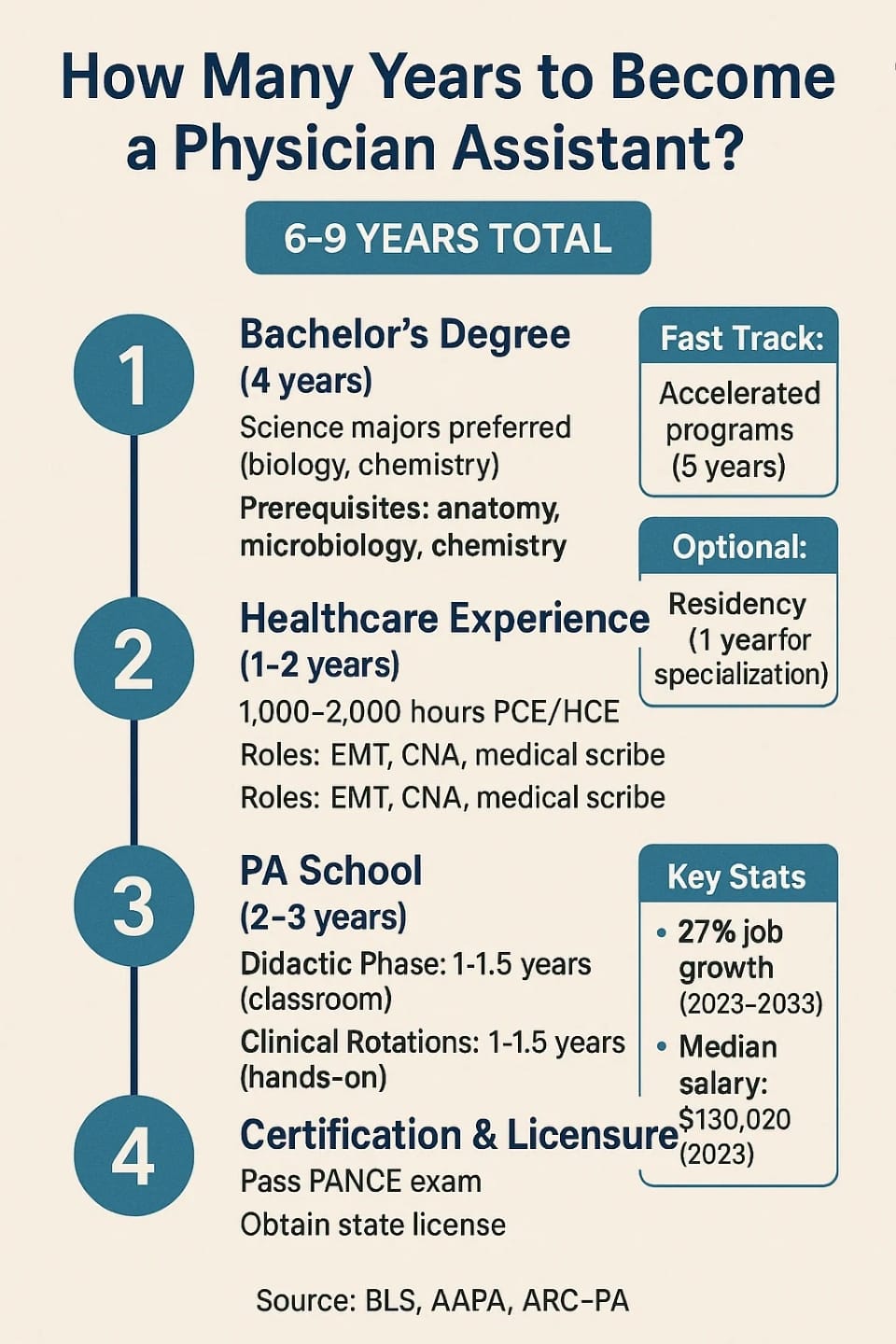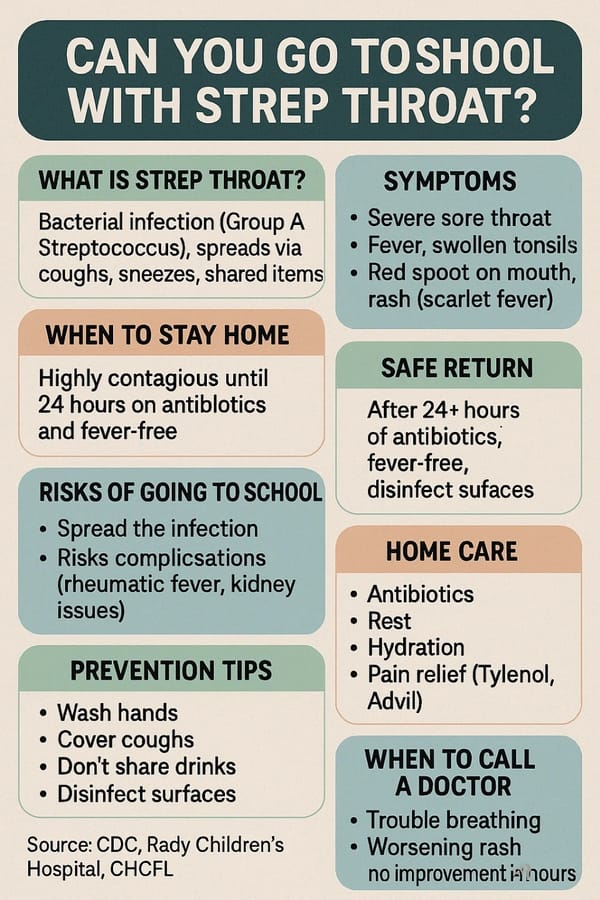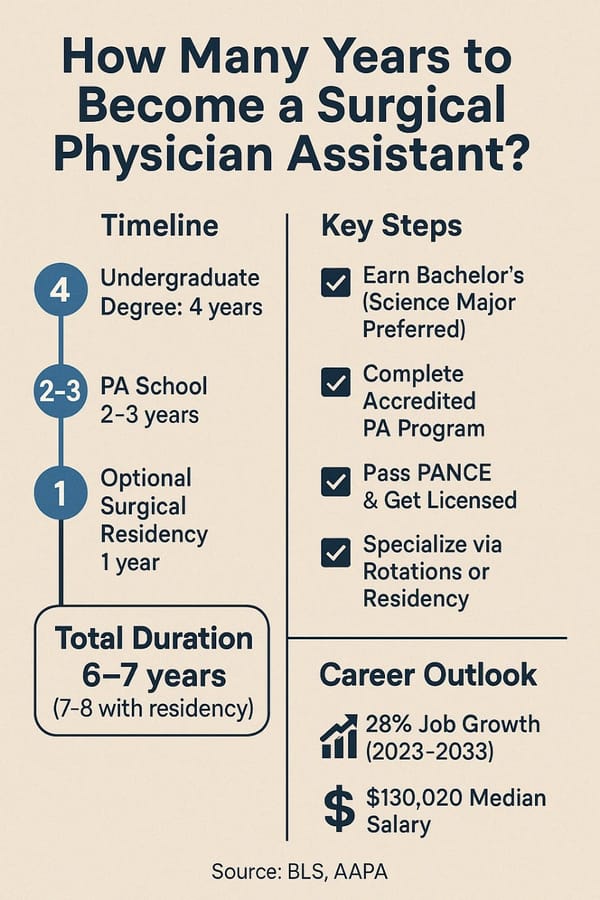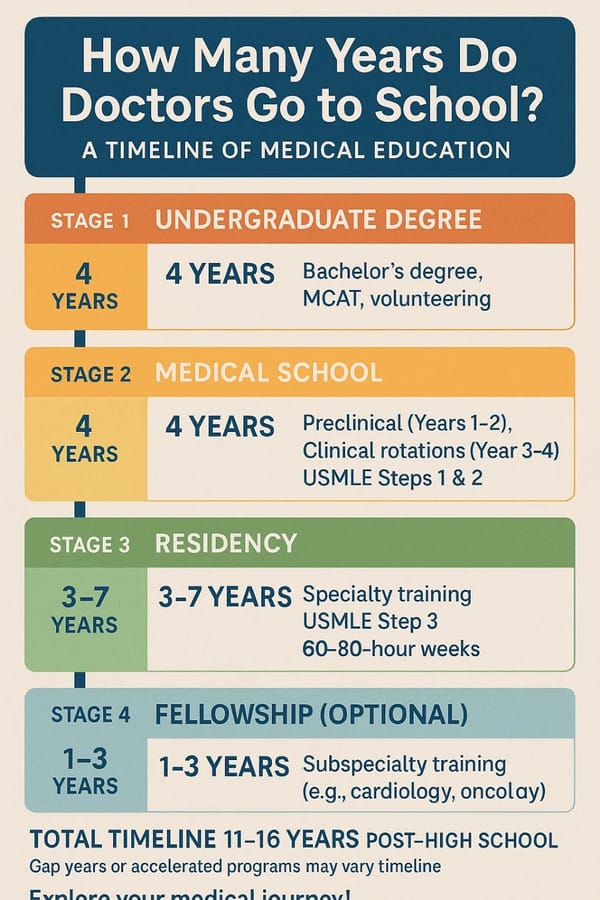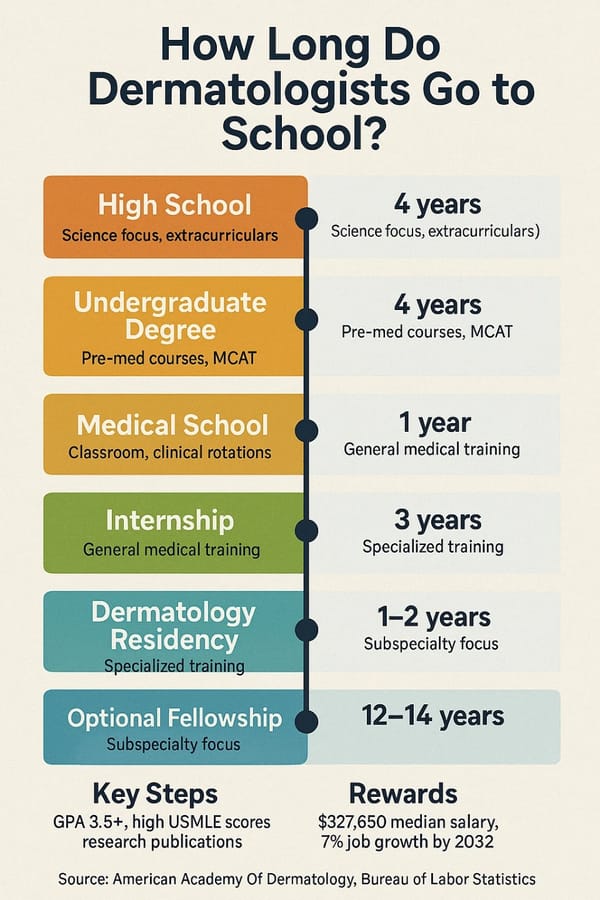How Many Years Do Physician Assistants Go to School?
Imagine stepping into a career where you save lives, work closely with patients, and enjoy flexibility without a decade-long medical school commitment. That’s the promise of becoming a physician assistant (PA)—but how long does it take to get there? Whether you’re a high school student dreaming of healthcare or a professional pivoting to a new path, knowing the timeline is crucial. This article unpacks the journey to becoming a PA, from undergrad to certification, with practical tips, expert insights, and a touch of personal perspective to guide you. Ready to discover how many years physician assistants go to school? Let’s dive in!
Why a Physician Assistant Career Shines
Physician assistants are the heartbeat of healthcare teams, diagnosing conditions, prescribing treatments, and collaborating with doctors to deliver top-notch care. It’s a role that blends autonomy with teamwork, offering both purpose and flexibility. The numbers back this up: the U.S. Bureau of Labor Statistics projects a 27% job growth for PAs from 2023 to 2033, with a median salary of $130,020 in 2023[1]. High demand, great pay, and meaningful work—what’s not to love? Let’s break down the educational path to make this career yours.
Mapping the PA Educational Journey
Becoming a PA typically takes 6 to 9 years, depending on your choices, prior experience, and program structure. Below, we explore each stage—bachelor’s degree, healthcare experience, PA school, and certification—offering clarity and strategies to streamline your path.
Step 1: Earning Your Bachelor’s Degree
The foundation of your PA journey is a bachelor’s degree, which usually spans 4 years of full-time study. While no specific major is required, science-focused fields like biology, chemistry, or health sciences are popular because they cover PA school prerequisites such as:
- Anatomy and physiology
- Microbiology
- General and organic chemistry
- Psychology
These courses build the medical knowledge you’ll need later. If your degree misses these, a post-baccalaureate program might be necessary, adding 1-2 years. Pro tip: plan your major and electives early to stay on track. For detailed prerequisite lists, visit the American Academy of PAs (AAPA).
I remember a college advisor stressing the importance of knocking out sciences early—it saved me from extra coursework later. Starting with a clear academic map can keep you firmly on the 4-year path.
Step 2: Building Healthcare Experience
PA programs demand real-world patient care experience (PCE) or healthcare experience (HCE), typically requiring 1,000 to 2,000 hours. This phase often takes 1-2 years, but savvy students can shorten it by working during undergrad. Common roles include:
- Emergency Medical Technician (EMT): Fast-paced, hands-on patient care.
- Certified Nursing Assistant (CNA): Direct support in hospitals or nursing homes.
- Medical Scribe: Insight into clinical workflows while charting patient visits.
For example, a friend of mine worked weekends as a CNA during her biology degree, logging enough hours by graduation to apply to PA school early. This overlap can trim your timeline significantly. Beyond meeting requirements, these roles build skills and confidence for PA school’s clinical demands.
Not sure what counts as PCE? Programs accredited by the Accreditation Review Commission on Education for the Physician Assistant (ARC-PA) detail acceptable experiences—check their sites to align your work with program expectations.
Step 3: Mastering PA School
PA school, where you earn a master’s degree, is the heart of your training, lasting 2 to 3 years. It’s split into two phases, each packed with learning and growth.
Didactic Phase (1-1.5 Years)
The first phase is classroom-intensive, diving into medical sciences like pharmacology, pathology, clinical medicine, and diagnostics. Think lectures, labs, and exams—it’s rigorous but thrilling as you connect theory to practice. This phase, lasting about 12 to 18 months, equips you with the knowledge to excel in clinical settings.
Clinical Rotations (1-1.5 Years)
Next, you’ll step into clinical rotations, spending 12 to 15 months in real-world healthcare settings. You’ll rotate through specialties like:
- Family medicine
- Pediatrics
- Surgery
- Emergency medicine
- Internal medicine
Under supervision, you’ll apply your skills, from taking patient histories to assisting in procedures. This phase transforms you from student to practitioner, building confidence and competence.
Program lengths vary—some, like those noted by BeMo Academic Consulting, wrap up in 24 months, while others stretch to 36 for deeper training. Always choose an ARC-PA-accredited program to ensure you’re eligible for certification.
Step 4: Certification and Licensure
Graduating PA school isn’t the finish line—you’ll need to pass the Physician Assistant National Certifying Examination (PANCE) to earn the PA-C (Physician Assistant-Certified) credential. Most students study for a few weeks to months, tailoring prep to their comfort level. Passing the PANCE unlocks the door to state licensure, which varies by state but typically involves submitting your PANCE results and meeting local requirements, like background checks.
For state-specific details, the AAPA’s state licensing page is a goldmine. While this step doesn’t add years to your schooling, it’s a critical bridge to practice. Once licensed, you’re ready to make your mark!
Exploring Timeline Variations
The 6 to 9-year range is standard, but your path can be faster or slower based on your approach. Here’s how different routes shake out.
Accelerated Programs
For the ambitious, combined bachelor’s and master’s programs can cut the timeline to 5 years. These tracks blend undergrad prerequisites with PA training, saving time but demanding focus. They’re competitive, with limited seats, as noted by Harvard Extension School. If you’re laser-focused early, this could be your fast track.
Part-Time Study or Breaks
Life happens—part-time study, financial constraints, or personal commitments can stretch your journey to 10 years or more. On the flip side, overlapping healthcare experience with undergrad can shrink it to 6 years for efficient planners.
Optional Residencies
Want to specialize in fields like surgery or cardiology? A PA residency, lasting 1 year, offers advanced training post-PA school. It’s optional but can elevate your skills and marketability, pushing the timeline to 8.5-9.5 years.
Here’s a snapshot of the options:
| Path | Undergrad | Experience | PA School | Total Time |
|---|---|---|---|---|
| Standard | 4 years | 1-2 years | 2.5 years | 7.5-8.5 years |
| Accelerated | 3 years (combined) | Concurrent | 2 years | 5 years |
| With Residency | 4 years | 1-2 years | 2.5 + 1 year | 8.5-9.5 years |
Note: Individual circumstances and program availability may adjust these estimates.
What Shapes Your Timeline?
Your journey isn’t one-size-fits-all. Key factors include:
- Program Access: Accelerated tracks are rare, and waitlists can delay PA school entry.
- Prior Experience: Nurses or paramedics may meet PCE requirements faster, shaving months off.
- Finances: Working to fund school can extend your timeline, while scholarships keep you moving.
- Life Balance: Family or other responsibilities might call for a slower pace.
Reflecting on my own path, I watched classmates juggle jobs and studies, sometimes adding a semester to graduate debt-free. It taught me that a solid plan—mapping prerequisites and experience early—can save time and stress. What’s your biggest priority as you plan?
The Payoff: Why It’s Worth the Years
The time to become a PA is an investment in a career that delivers on multiple fronts:
- Booming Demand: A 27% growth rate means jobs aplenty, from urban hospitals to rural clinics.
- Strong Earnings: That $130,020 median salary offers stability and growth potential.
- Versatility: Work in pediatrics, orthopedics, or beyond—PAs have options.
- Purpose: Every day, you’ll improve lives, often forming deep patient connections.
The AAPA underscores PAs’ unique blend of autonomy and collaboration—a balance that keeps the role dynamic and rewarding.
Tips to Fast-Track Your PA Dream
Ready to optimize your journey? These strategies can help:
- Prep in High School: Take AP biology or chemistry to ease undergrad prerequisites.
- Work Smart: Gain PCE as a scribe or CNA during college to overlap hours.
- Compare Programs: Look at PA school costs, lengths, and admission criteria early.
- Build Connections: Shadow PAs or join pre-PA clubs for insights and mentorship.
- Stay on Track: Use apps like Notion to manage applications and deadlines.
I once met a PA who swore by shadowing early—it clarified her goals and strengthened her application. Small steps like these add up!
Conclusion: Your PA Journey Starts Now
So, how many years do physician assistants go to school? Typically, 6 to 9 years, weaving together a 4-year bachelor’s, 1-2 years of healthcare experience, and 2-3 years of PA school. Accelerated programs can slim it to 5 years, while residencies might extend it to 9.5 years. Your path depends on your pace, priorities, and plans.
The road to becoming a PA demands effort, but the rewards—job security, impact, and a paycheck that reflects your value—are unmatched. Why wait? Start exploring accredited programs at ARC-PA or reach out to a PA for advice. What’s your first step—researching schools, shadowing a pro, or mapping your timeline? Share your plans or dive in today!
U.S. Bureau of Labor Statistics, Physician Assistants, accessed April 2025. ↩︎
